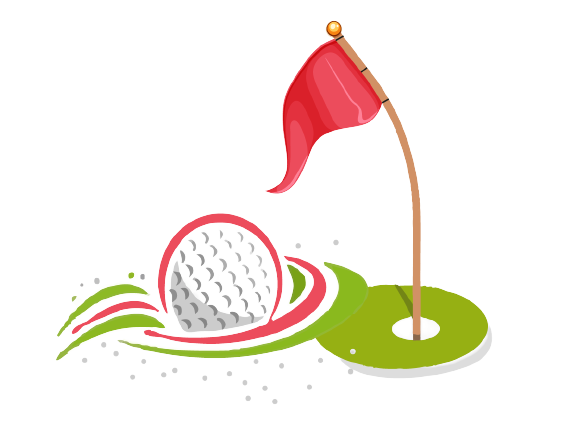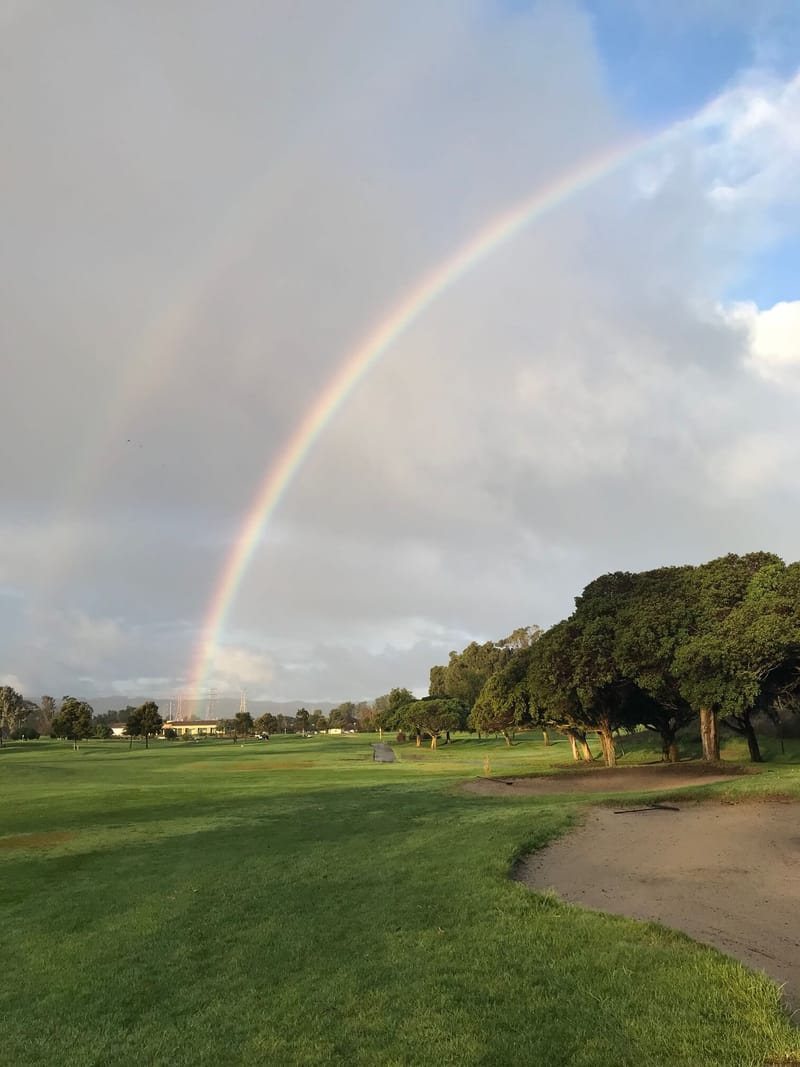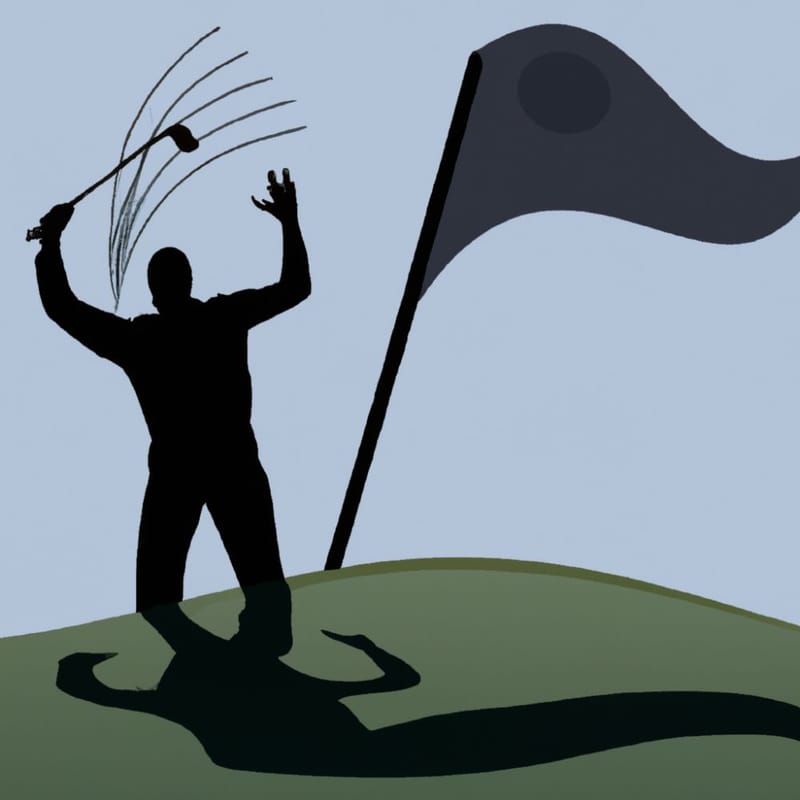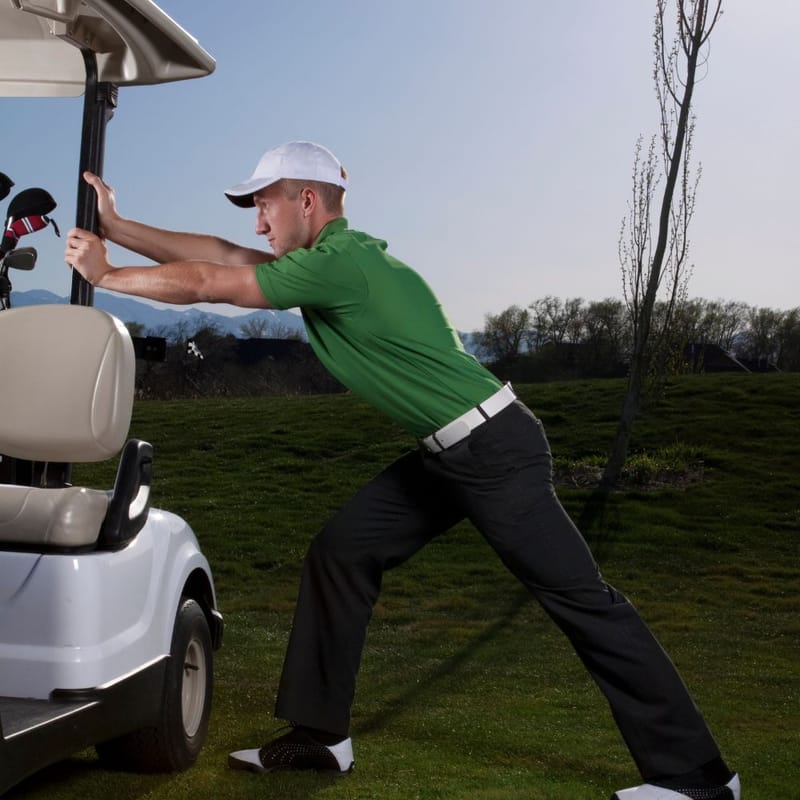Content Summary
As a player, one of the areas I found to be the most difficult to wrap my head around was what rules would actually help me to improve my score/handicap. Check out the World Handicap System™ and its score-posting technology.
With this thought in mind, I did some research and came up with the following 8 golf rule changes I think help my score and will help yours as well. And if nothing else, you can impress your friends with your knowledge of the rules of golf.
The USGA Rules of Golf have undergone several changes in recent years, aimed at making the game fairer and helping players save strokes.
These rule changes are designed to enhance the player's experience and promote fair play and reasonableness on the golf course.
These rule changes include allowing no penalty if a ball accidentally hits you or your equipment.
Allowing the removal of loose impediments in bunkers and penalty areas, allowing the use of distance measuring devices in competitions, eliminating penalties for accidental movement of the ball or ball marker on the putting green, providing additional relief options from bunkers, removing penalties for accidental double hits, and more.
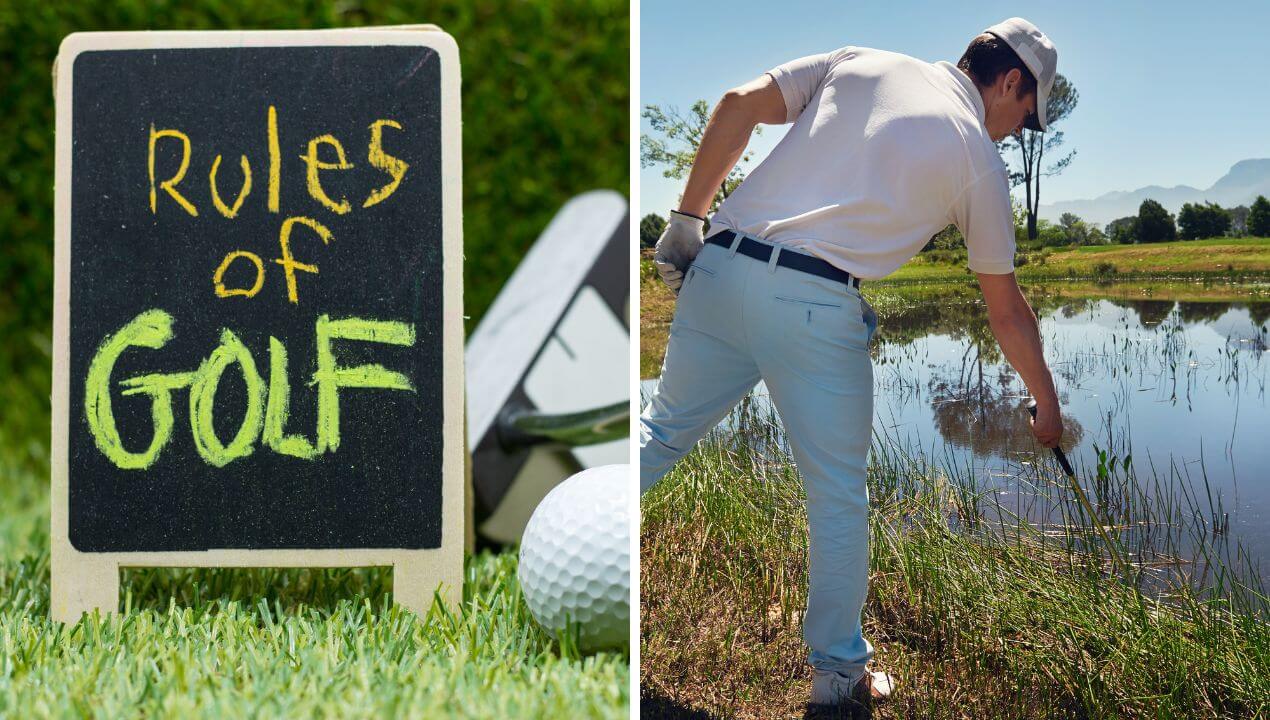
Rules of Golf USGA
These rule changes are designed to enhance the player's experience and promote fair play on the golf course.
- Golf rule changes are aimed at making the game fairer and helping players save strokes.
- Accidental contact with the ball or equipment results in no penalty.
- Loose impediments can now be removed in bunkers and penalty areas.
- Ball moved does not incur a penalty for accidental movement.
- Out of bounds does not require going back to the tee.
- Ball moved during a search is no longer a penalty.
- The ball can now be identified without needing a witness.
- When a ball moves on a green from outside influences it is replaced at it's original spot.
- Distance measuring devices are allowed in competitions, except those with slope measurements.
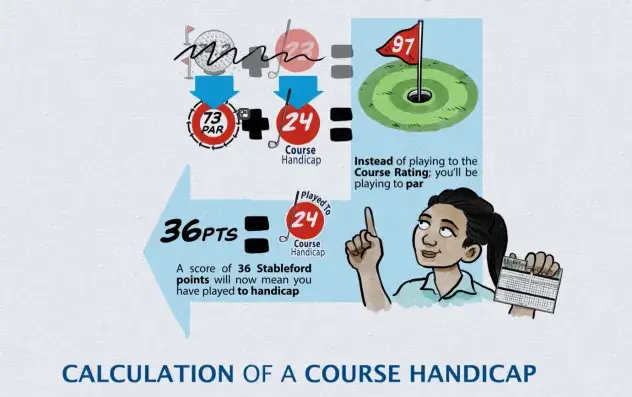
As golf continues to evolve, it is important for players to stay updated on the latest rule changes and utilize them to their advantage on the course.
The printed publication of the Rules of Golf is intended for golf administrators, referees and officials and Rules enthusiasts. All others should consider accessing the Rules of Golf for free through digital access channels at www.usga.org/rules or by downloading the Official Rules of Golf mobile app access.
USGA sales are limited to customers in the U.S., its territories, and Mexico in the English language. All others must contact The R&A at www.randa.org. Paperback, 244 pages. Printed Books Dimensions, 8 1/4" x 5 3/4" x 1/2".
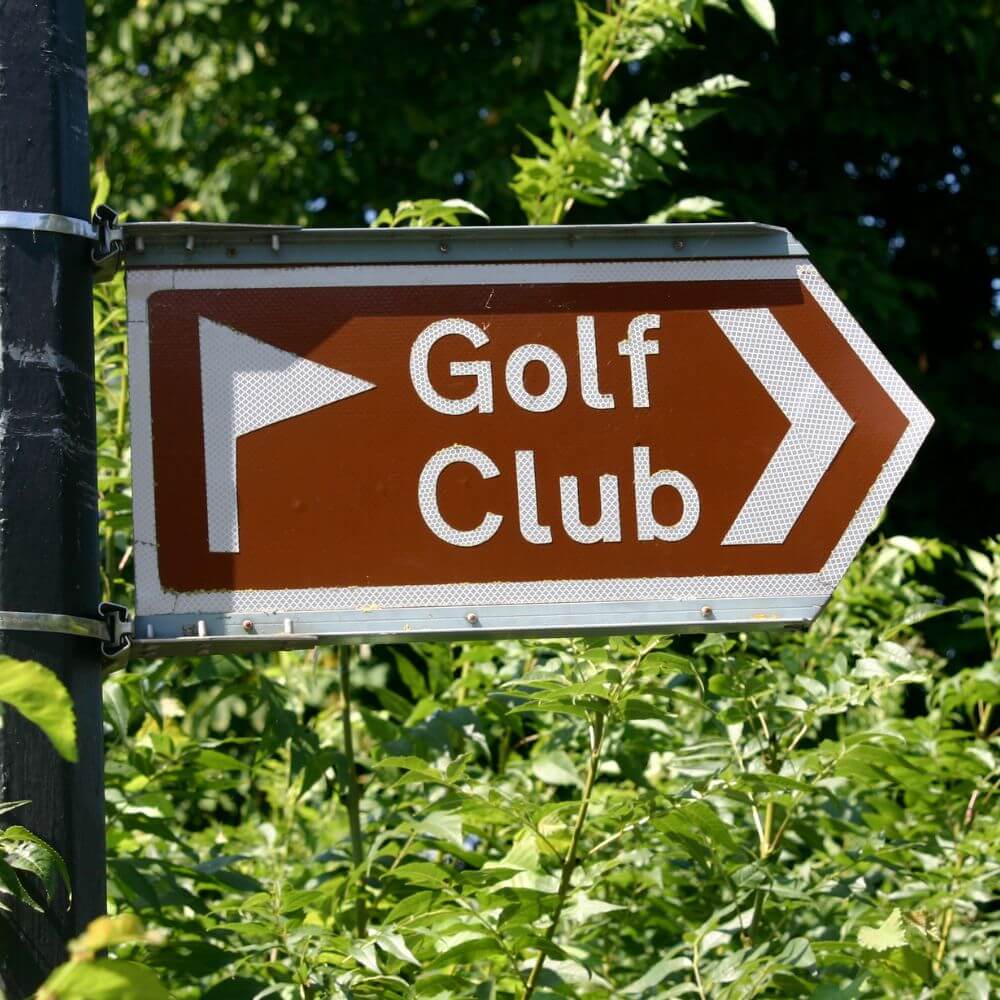
Golf Etiquette 101/Golf Manners
Ball Accidentally Hits You
One of the significant rule changes in golf pertains to what happens when a player's ball accidentally hits them, their equipment, or their caddie. According to Rule 11.1a, which has undergone revisions over the years, there is now no penalty for such accidental contact with the ball.
In 2008, the penalty for a ball accidentally hitting a player or their equipment was reduced from two shots to one shot. However, in 2019, the rules were further amended to eliminate the penalty entirely. This change recognizes that accidental contact with the ball should not result in additional strokes and allows players to continue their rounds without any penalty.
This revision has been well-received by golfers, as it acknowledges that unintentional mishaps happen during a game and should not carry a punishment. It also aligns with the sport's objective of promoting fair play and ensuring that players are not penalized for incidents beyond their control.
| Year | Penalty for Accidental Ball Contact |
|---|---|
| Before 2008 | Two-shot penalty |
| 2008-2018 | One-shot penalty |
| 2019 onwards | No penalty |
Removal of Loose Impediments in Bunkers and Penalty Areas
One of the significant changes to the rules in golf is the removal of loose impediments in bunkers and penalty areas. Under the previous rules, players were not allowed to touch or remove any loose impediments present in these areas. However, Rule 12.1a and Rule 15.1 now permit the removal of loose impediments in both bunkers and penalty areas.
These key changes to the rules aim to simplify the game and make it easier for players to navigate these challenging areas on the course. Loose impediments such as leaves, twigs, or stones can often interfere with a player's shot or the path of their ball.
Allowing the removal of these obstacles enables players to have a fairer chance of executing their shots successfully and promotes a more enjoyable golfing experience. I've had a club damaged in the past because of the old rule.
It is important to note that while the removal of loose impediments is now permitted, players must exercise caution. If the ball moves while removing the loose impediment, a penalty may still be incurred.
Players should always be mindful of the position and movement of their ball to avoid any accidental rule violations. By incorporating this change into the rules, golf authorities have taken a step towards ensuring fairness and accessibility for all players.
| Previous Rule | New Rule |
|---|---|
| Not allowed to remove loose impediments in bunkers and any penalty area | Permitted to remove loose impediments in bunkers and penalty areas |
| Increased chance of interference and unfair shots | Fairer gameplay and improved player experience |
| Complex interpretation and application | Simplified rules and easier navigation of obstacles |
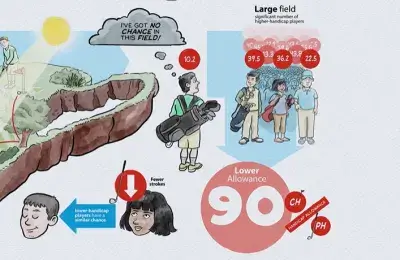
Ball Moved
The Rules of Golf were updated in 2019 to modify the standard for assessing penalties when a player accidentally causes their ball to move on the putting green. Previously, any ball movement caused by the player would incur a 1-stroke penalty. However, it was determined that incidental movement sometimes occurs without being the result of unreasonable action from the player.
As such, the new Rule 13.1d(2) aims to increase fairness and clarity. Under the updated regulation, if a player accidentally causes their ball to move on the putting green, there will be no penalty assessed so long as that movement is not attributable to another rule breach. For example, if the ball moves after the player grounds their club right next to it, they would still receive a 1-stroke penalty.
However, if factors like gradient/slope cause the ball to move without the player breaching another specific rule, there will be no penalty despite the player causing the initial movement. The ball would simply be replaced with no stroke penalty. This allows for more sensible rulings when a player could not have reasonably prevented their ball from moving based on the existing conditions or other influencing elements out of their control.
| Rule Type | If player caused ball to move | Penalty? | Replace ball? | Exceptions |
|---|---|---|---|---|
| Previous Rule | Any movement by player | 1 stroke | Yes | None |
| New Rule (2019+) | Accidental movement | No penalty | Yes | 1 stroke if breached another rule (grounded club, caddie movement, etc.) |
Out of Bounds Rule
The Out of Bounds Rule in golf has traditionally caused delays in play, especially when players need to re-tee or go back to the previous spot after hitting a shot out of bounds. To address this issue and improve the pace of play, modifications were introduced to provide an alternative to this rule.
Under the updated Out of Bounds Rule, golf clubs have the option to implement a Local Rule permitting players to drop a ball near where the original ball went out of bounds. This new provision enables golfers to avoid the time-consuming process of re-teeing or returning to the previous spot, thereby expediting the game.
| Aspect | Previous Rule | New Rule (with Local Rule) |
|---|---|---|
| Action when ball goes out | Player re-tees or returns to the previous spot | Player can drop a ball near the point it went out |
| Time taken | Often time-consuming, causing delays in play | Expedited play, reducing time spent on out-of-bounds |
| Impact on pace of play | Slowed down pace due to the process of re-teeing/returning | Improved pace by allowing a quicker drop and play |
| Player experience | Frustrating and may disrupt momentum | Offers a more seamless and efficient experience |
| Implementation | Universally applied Out of Bounds Rule | Depends on the specific golf club's adoption of the Local Rule |
Ball Moved During Search
The previous rule regarding a player moving their ball during a search imposed a penalty stroke if such an accidental movement occurred. This often led to frustration as players were penalized for unintentional actions while trying to locate their ball. The recent modification aims to alleviate this issue by removing the penalty associated with such inadvertent movements during the search for a ball.
Under the new rule, if a player accidentally moves their ball while searching for it, there is no longer a penalty imposed. This change intends to reduce the stress and potential penalties related to the search for a ball, allowing players to focus on finding their ball without the fear of being penalized for a simple mishap.
| Aspect | Previous Rule | New Rule |
|---|---|---|
| Action if ball moved during search | Penalty stroke incurred | No penalty for accidental movement during ball search |
| Impact on player's mindset | Frustrating, fear of penalty for accidental movements | Relieved pressure, allows for a more relaxed search |
| Encouragement for thorough search | Potential fear of moving the ball leading to less search | Promotes a more thorough and focused ball search |
| Emphasis on player's intent | Penalized for unintentional movements | Acknowledges accidental movement without penalty |
| Rule simplicity | Added complexity with penalty for accidental movement | Simplifies the rule, making it more player-friendly |
Identifying the Ball
The previous rule required a player who intended to pick up their ball to identify it to inform a fellow player in advance and provide them with the opportunity to observe the identification process. This procedure aimed to ensure transparency and prevent any suspicion of manipulation or incorrect identification. However, this process could sometimes slow down the pace of play and seemed overly cautious.
The updated rule eliminates the requirement for players to inform a fellow player in advance when they intend to pick up their ball for identification purposes. Players are now allowed to identify their ball without prior notification, streamlining the process and potentially expediting the game.
| Aspect | Previous Rule | New Rule |
|---|---|---|
| Procedure for identifying the ball | Required informing a fellow player and their observation | No need to inform in advance; player can identify freely |
| Impact on pace of play | Could slow down play due to the notification process | Potentially speeds up play without the notification step |
| Trust in player's integrity | Emphasized transparency and prevented suspicion | Still relies on player integrity; simplifies the process |
| Player autonomy and convenience | Restricted the process, requiring pre-approval | Offers more freedom and autonomy to identify the ball |
| Simplification of the identification process | Added a step in the identification process | Streamlines the identification process for players |
Ball Moves on the Green
Under the previous rule, if a player had marked their ball on the green, replaced it, and the ball moved due to external factors like wind or natural elements, or even if it moved on its own, the player was required to play the ball from its new position. This rule often led to potential disadvantages for players due to uncontrollable circumstances that caused the ball to shift.
The revised rule eliminates the need for the player to play the ball from the new spot if it moves on the green after being marked and replaced. Instead, the player is simply required to put the ball back to its original marked spot, disregarding any movement that might have occurred.
| Aspect | Previous Rule | New Rule |
|---|---|---|
| Action if ball moves on the green | Ball played from the new spot if it moved after being marked | Player only required to put the ball back to original spot |
| Impact on player's position | Could disadvantage players due to uncontrollable movements | Maintains the fairness by returning the ball to its spot |
| Influence of external factors | Ball's movement considered, potentially affecting the play | Disregards external factors, ensuring a fair play |
| Simplicity of the rule | Added complexity in determining new ball position | Simplifies the rule, focusing on restoring the position |
Use of Distance Measuring Devices in Competitions
One of the notable rule changes in golf is the allowance of distance measuring devices (DMDs) in competitions. Under Rule 4.3, players are now permitted to use DMDs to measure distances during their rounds. This rule change recognizes the prevalence of these devices in modern golf and aims to streamline the game by providing players with accurate distance information.
It is important to note that while most courses allow the use of DMDs, devices with slope measurements are still prohibited in competition play. This ensures that players rely solely on their skills and judgment rather than receiving additional assistance from devices that provide slope-adjusted distances.
By allowing the use of DMDs in competitions, players can make more informed decisions about club selection and shot strategy. They can quickly and accurately determine distances to hazards, greens, and other landmarks on the course, helping them make better choices that can ultimately improve their performance.
| Advantages of Using DMDs in Competitions | Disadvantages of Using DMDs in Competitions |
|---|---|
| Accurate distance measurements | Prohibited use of slope-adjusted distances |
| Improved club selection and shot strategy | Potential distraction from focusing solely on the game |
| Time-saving in determining distances | Risk of relying too heavily on device and not developing distance judgment |
Conclusion
The recent golf rule changes have brought about significant improvements to the game, enhancing the player experience and promoting fair play.
These changes address various aspects of the game, including accidental actions, loose impediments in bunkers and penalty areas, the use of distance-measuring devices in competitions, and providing additional relief options.
The purpose of these rule changes is to streamline the game and ensure that players of all levels can enjoy the sport to its fullest.
Golf Rule Changes - FAQ
What are the key changes in the 2023 rules of golf?
The 2023 rules of golf include changes related to local rules, handicaps, rules for players with disabilities, replacing a damaged club, and rules concerning a ball at rest.
How have the rules for players with disabilities been modified in the 2023 rules of golf?
Rule 25 of the 2023 rules of golf features modified rules for players with disabilities, aiming to promote inclusion and make the rules easier to understand and apply.
Can I replace a damaged club under the 2023 rules of golf?
Yes, the 2023 rules of golf allow players to replace a club that is damaged during a round, provided that it was not damaged intentionally or by abuse. There are specific guidelines for when and how the club can be replaced.
When is a ball at rest considered to be "allowed to replace" under the 2023 rules of golf?
According to the 2023 rules of golf, a ball at rest is allowed to be replaced if it moves to another area of the course by natural forces, such as wind or water. Additionally, it can be replaced if it comes to rest out of bounds after being dropped or moved by natural forces.
What are the major changes in the 2023 rules of golf for the accessibility and understanding of the rules?
The 2023 rules of golf include major changes aimed at making the rules easier to understand and apply, particularly for players with disabilities, and to promote inclusivity within the sport of golf.
What does the term "local rule" refer to in the context of the 2023 rules of golf?
In the 2023 rules of golf, a local rule is a rule that may be adopted by the committee in charge of a competition or course to address specific circumstances or conditions, provided that it is consistent with the principles and guidelines set forth in the official 2023 rules of golf.
How do the 2023 rules of golf make it easier for players to replace a damaged club?
The 2023 rules of golf include new exceptions that make it easier for players to replace a damaged club, taking into account various situations where a club may be damaged during the course of play.
Are there specific regulations in the 2023 rules of golf regarding a ball at rest?
Yes, the 2023 rules of golf outline specific regulations concerning a ball at rest, including when it must be replaced and the circumstances under which it may be moved to another area of the course or come to rest out of bounds.
What is the purpose of the January 1, 2023 rules of golf update?
The 2023 rules of golf update aims to modernize the rules in response to the growing popularity of golf and to guide the sport in promoting inclusivity, making the rules easier to understand, and ensuring fairness for all players.
